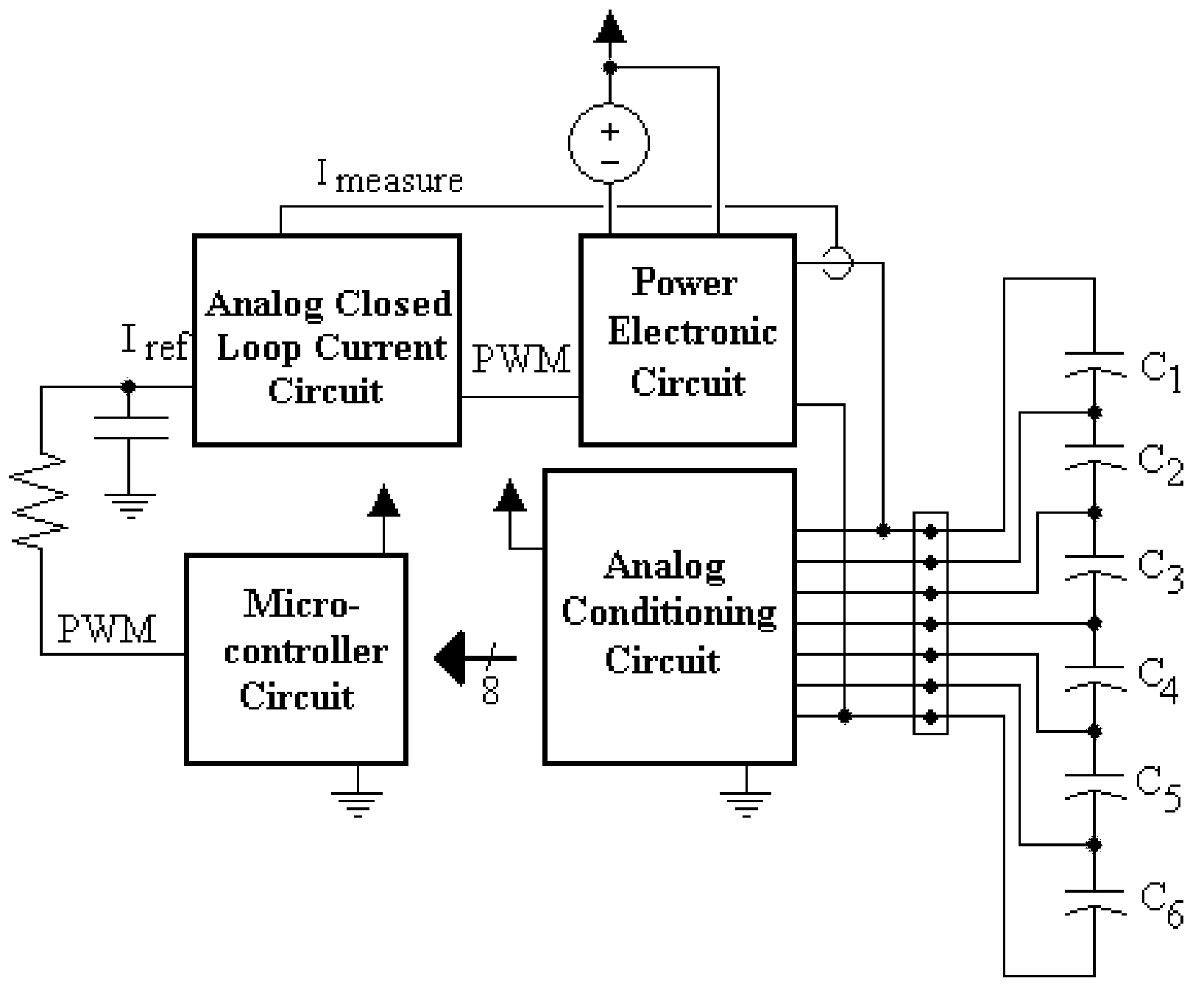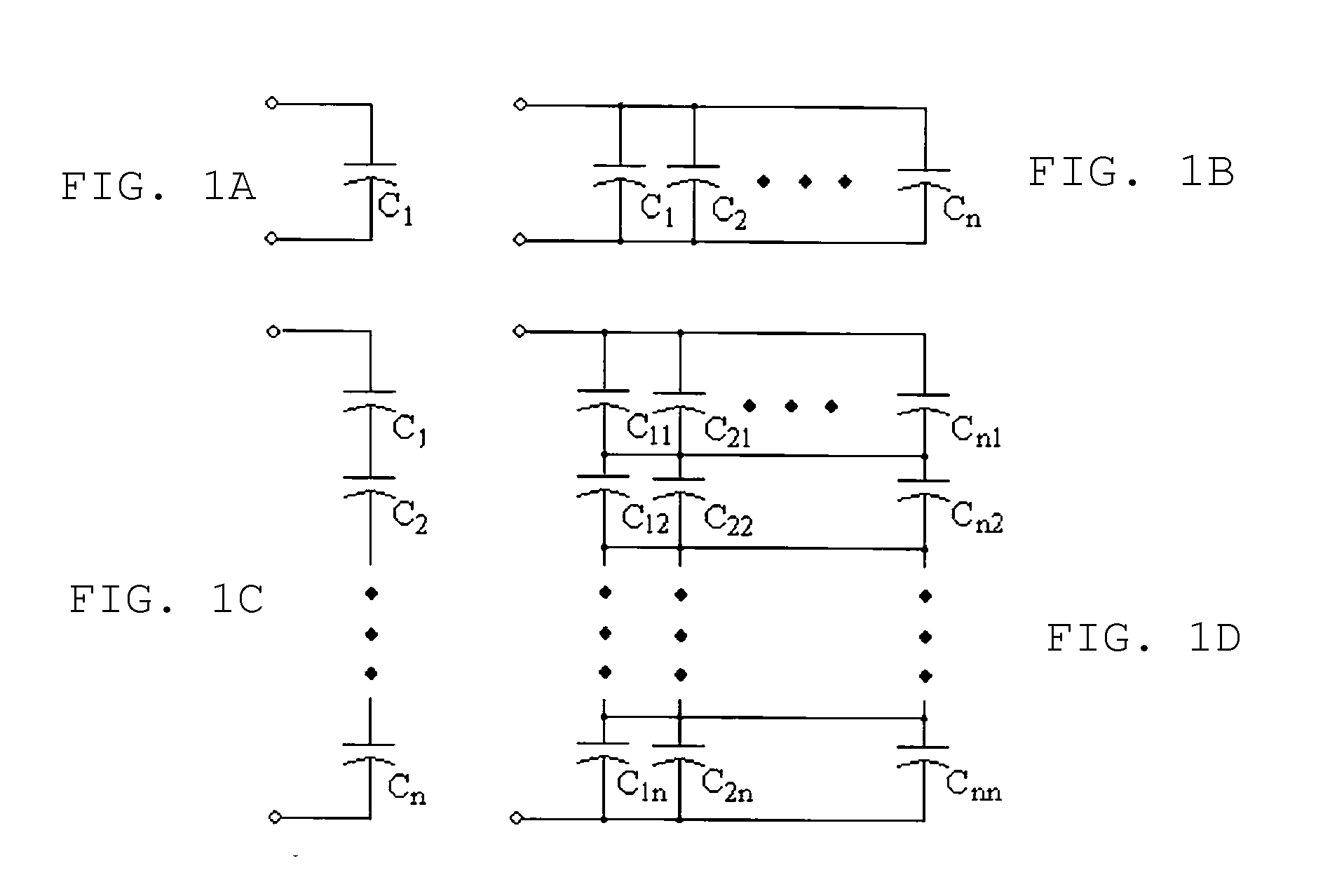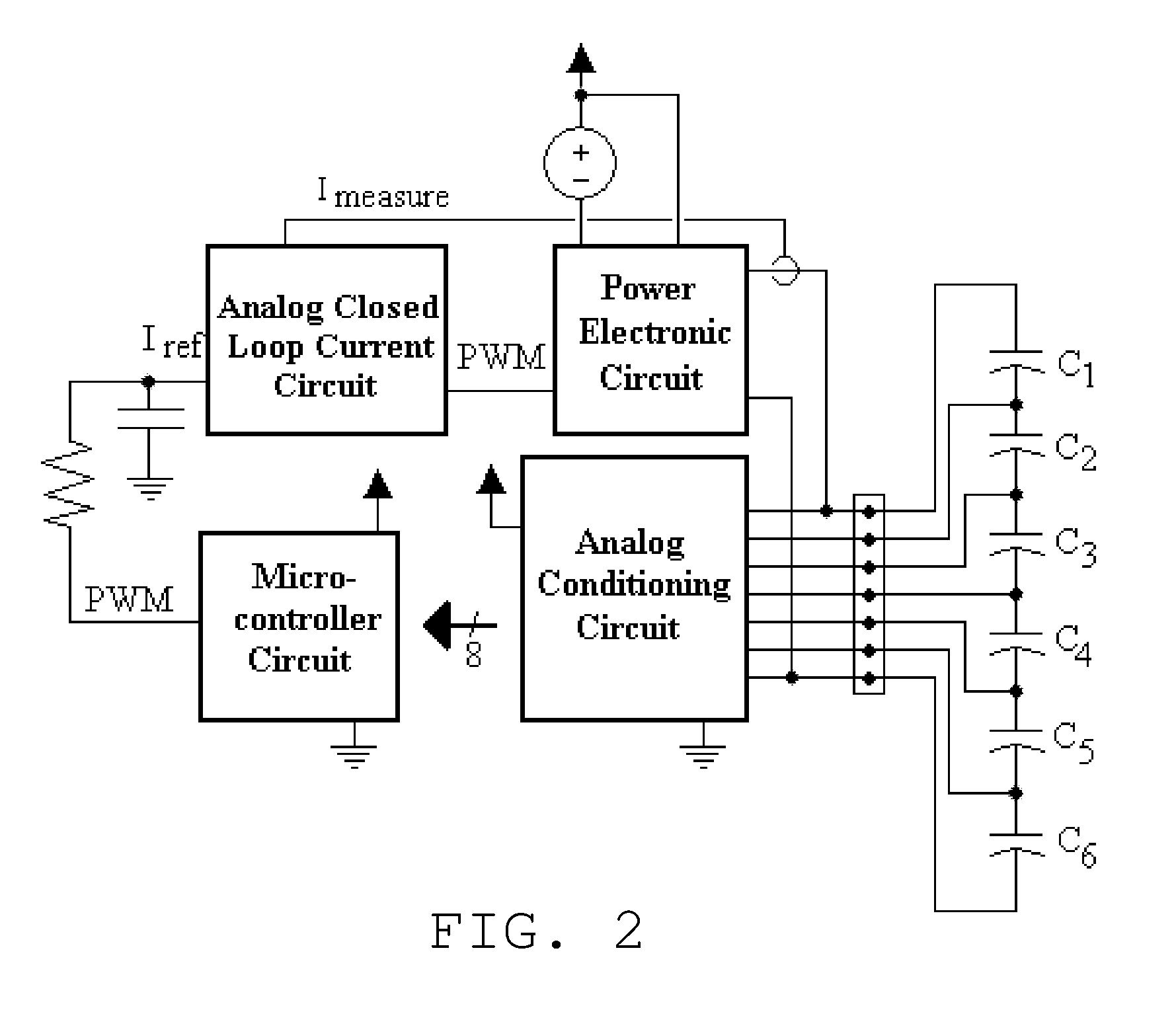Ultra-fast ultracapacitor pack/device charger
a technology of ultracapacitors and chargers, applied in electrical storage systems, safety/protection circuits, instruments, etc., can solve the problems of reducing life or failure, and affecting the charge rate of ultracapacitors
- Summary
- Abstract
- Description
- Claims
- Application Information
AI Technical Summary
Problems solved by technology
Method used
Image
Examples
first embodiment
[0044]The first embodiment is an ultracapacitor charging method for charging a string of ultracapacitor cells. The method comprising the steps of: (1) measuring the voltage of each ultracapacitor cell; (2) determining a maximum voltage level of each ultracapacitor cell; (3) determining which ultracapacitor cell has the largest voltage; (4) charging said string of ultracapacitor cells through use of a charger, said charger connected to a voltage source; (5) monitoring the voltage of the ultracapacitor cell having the largest voltage; and, (6) stopping the charging said string when the ultracapacitor cell with the largest voltage reaches its maximum voltage level.
[0045]It is preferred that the method further comprise: (1) first connecting said string of ultracapacitor cells to said charger, (2) last disconnecting said string of ultracapacitor cells from said charger. It is further preferred that the voltage of each ultracapacitor cell is monitored during the charging step to determine...
second embodiment
[0046]A second embodiment is a method of charging a string of ultracapacitors comprising the following steps: (1) connecting a string of ultracapacitors to a charger, said charger connected to a voltage source; (2) measuring the voltage of each of the ultracapacitors in said string; (3) charging said string of ultracapacitors using said charger; (4) monitoring the voltage of each ultracapacitor; (5) determining which ultracapacitor cell has the largest voltage; (6) monitoring the voltage of the ultracapacitor cell with the largest voltage during charging; (7) stopping charging of said string of ultracapacitors when the ultracapacitor cell with the largest voltage reaches its maximum voltage; and, (8) disconnecting said charger from said string of ultracapacitors. Further steps optionally including: (9) calculating the total string voltage by summing the voltages of said ultracapacitor cells, (10) following a current (charging) profile based upon the total string voltage; and (11) mo...
third embodiment
[0047]A third embodiment being a charger for charging a string of ultracapacitors. The charger comprising: (1) a voltage source; (2) a MCU, said MCU measuring the voltage of each ultracapacitor cell via an analog circuit during charging to determine which ultracapacitor cell has the largest voltage, said MCU commanding current to said string of ultracapacitors based on the measured voltages, said MCU monitoring the voltage of the ultracapacitor cells and when the ultracapacitor cell with largest voltage reaches its maximum voltage the MCU commands the voltage source to stop charging the ultracapacitor string; and (3) a first analog circuit, said first analog circuit for allowing the MCU to measure the voltage of each ultracapacitor cell, said first analog circuit measuring the difference between the positive and negative terminals of each ultracapacitor in said string and outputting a signal proportional to the voltage to the MCU. Optionally the charger could comprise a second analo...
PUM
 Login to View More
Login to View More Abstract
Description
Claims
Application Information
 Login to View More
Login to View More - R&D
- Intellectual Property
- Life Sciences
- Materials
- Tech Scout
- Unparalleled Data Quality
- Higher Quality Content
- 60% Fewer Hallucinations
Browse by: Latest US Patents, China's latest patents, Technical Efficacy Thesaurus, Application Domain, Technology Topic, Popular Technical Reports.
© 2025 PatSnap. All rights reserved.Legal|Privacy policy|Modern Slavery Act Transparency Statement|Sitemap|About US| Contact US: help@patsnap.com



